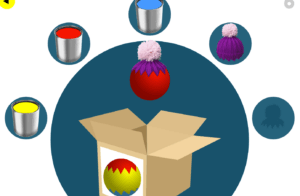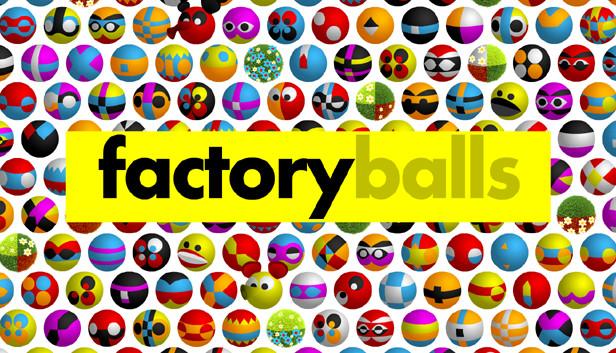For this week’s critical play I chose to do Factory Balls. I initially had no idea what it was about, and I did not expect it to literally reflect the name of the game – I thought the puzzles would be much more involved, but as it turned out I really enjoyed the simplicity of thinking about how to layer paint appropriately with the tools given, and thinking about the process from an algorithmic perspective as I got more familiar with the mechanics. The creator is Bart Bonte, and Factory Balls is available on multiple platforms, including web browsers, iOS, and Android devices. Some versions are also available on platforms like Steam. I personally just played the 25 level HTML sampler in my browser, and I appreciated the Flash nod, as I was an avid Flash game player as a kid and I have missed it. In my opinion, the game is suitable for a wide range of audiences, including children, teens, and adults who enjoy puzzle and logic games. It’s particularly appealing to those who enjoy problem-solving and creative thinking with simple gameplay and colorful visuals. As a puzzle game, the mechanics of Factory Balls, through the intuitive use of varied tools and iterative interaction loops, create an engaging and rewarding puzzle-solving experience that balances challenge and accessibility, despite minor frustrations inherent to its trial-and-error nature.
At its core, the mechanics of Factory Balls revolve around a simple concept: the player is given a plain ball each level, and must use varied tools placed ont he ball to recreate a target design. These tools can include paint buckets, masking items like belts and hats, and other apparatuses that allow for layering and masking parts of the ball to achieve the desired effect. The challenge lies in figuring out the order and combination in which these tools must be used.
The game starts with basic patterns and gradually introduces more complex designs, requiring an increasing level of planning and precision. Early levels involved simple tasks like dipping the ball in paint or using a mask to cover parts of the ball before painting, and helped me learn how to use tools at a rate that I felt was encouraging for me to keep going, while also being challenging enough that I didn’t lose interest. However, as I progressed further, I had to deal with more and more intricate patterns that require multiple steps and the use of tools in combination in a specific sequence. This feature of incremental complexity ensures that players like me remain engaged and challenged, without becoming overwhelmed too quickly – giving us a chance to learn as we go, and apply what we learned from previous levels in future levels.
 me learning how to use the new hat tool in level 6
me learning how to use the new hat tool in level 6
As I played I observed how interaction loops function in Factory Balls. It revolves around three primary actions: observing the target pattern, experimenting with the tools, and refining the approach based on the outcomes. This loop is highly iterative by nature due to the feature of incrementally more difficult levels, and relies on trial and error with painting and masking different ways, encouraging me to think critically and creatively. Beginning each level, I had to carefully examine the target pattern. This step sets the stage for the entire problem-solving process, as we must note the colors, shapes, and sequences needed to replicate the pattern. With the pattern in mind, we start experimenting with the tools at our disposal. This step requires a lot of trial and error as we must test different combinations and sequences to see what works. Factory Balls’ design ensures that each mistake is a learning opportunity, gradually guiding us towards the correct solution. After each attempt, we can refine our approach based on what we have learned. This might involve adjusting the order of actions or trying a completely new strategy. The satisfaction of finally cracking a complicated pattern was a significant part of the game’s appeal to me.
With regards to what I liked and didn’t like, I appreciated how the minimalist design focuses our attention on the puzzles themselves without unnecessary distractions. This design choice enhances immersion and allows for a pure puzzle-solving experience. The gradual increase in difficulty is well-balanced, making the game accessible to beginners while still providing a challenge for experienced players, and helps foster a sense of achievement which is what makes Factory Balls so fun. However, I sometimes found the trial-and-error aspect frustrating, particularly on more complex levels where the correct sequence of actions is not immediately apparent, and I wished that I had a kind of ‘undo’ button to simply undo a mistake instead of having to start all over again. It was frustrating to figure out the correct pattern while already midway through an attempted sequence, then having to just trash it and begin anew.
 here i’ve made a mistake. Luckily I was able to find a branch off from my current sequence to fix it, but it would have been nice to be able to undo the last paint job I did.
here i’ve made a mistake. Luckily I was able to find a branch off from my current sequence to fix it, but it would have been nice to be able to undo the last paint job I did.



